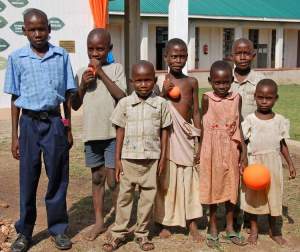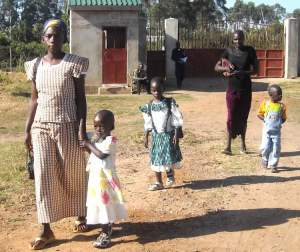

 |
In Rev. Evalyn Wakhusama's home region, Nambale, Kenya, there were few services for children orphaned or made vulnerable by these scourges. She determined that building a school and creating a safe, fostering environment for these orphaned children could turn their lives around.
A great deal of thought went into creating application requirements and processes for the supported students population.
Supported Students Selection Process
First, the child's remaining family, often distant cousins or grandparents, submits an application and a minimal application fee, about five U.S. dollars.
 |
Each aspect of the prospective student's life is rated on a scale of 1-4.
For example, regarding housing, a 1 means that the child has no place with a roof to sleep at night, while a 4 means the child sleeps in a permanent structure of any type, including one made of mud bricks with a straw roof and dirt floor.
For food, a 1 means the child eats a meal two or three times a week, usually something as simple as corn porridge while a 4 means the child eats three meals a day. Children are also evaluated for physical abuse, with a 1 meaning the child had been abused or even tortured. Regarding guardianship, a 1 means the child is passed from family to family and often has no supervision at all, while a 4 means that the child lives with at least one adult concerned for the child's well-being. The lowest overall score is 25 and the highest is 100. Most years, the supported students score between 40 and 50.
After the interview, a person who is not connected to the School goes to each child's village and visits their homes to verify the information submitted. The village leaders are also interviewed as a secondary check of the information. Sadly, the quality of the education at NMS is so good that many families would lie to get their child into the School.
Turning Lives Around
These children are truly the poorest of the poor. It is costly to educate these children because they come to the school with no resources – usually no previous medical or dental care, very little clothing and no school supplies. Yet only after three years at NMS these children are happy, comfortable in their new surroundings and have made new friends. And they are excelling alongside their fee-paying classmates. This is why the School exists: to break the cycle of poverty for these children and to give them hope and a new outlook on their lives.
WIKS-USA, Inc. is dedicated to the success of orphans and other vulnerable children (OVCs) in rural Kenya, by providing financial and technical assistance for their education, shelter and emotional support at the Nambale Magnet School.

all materials copyright © 2025
WIKS-USA